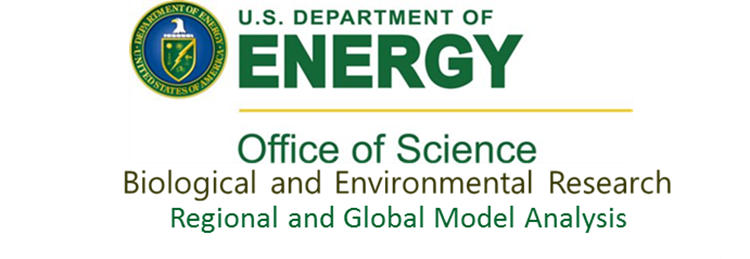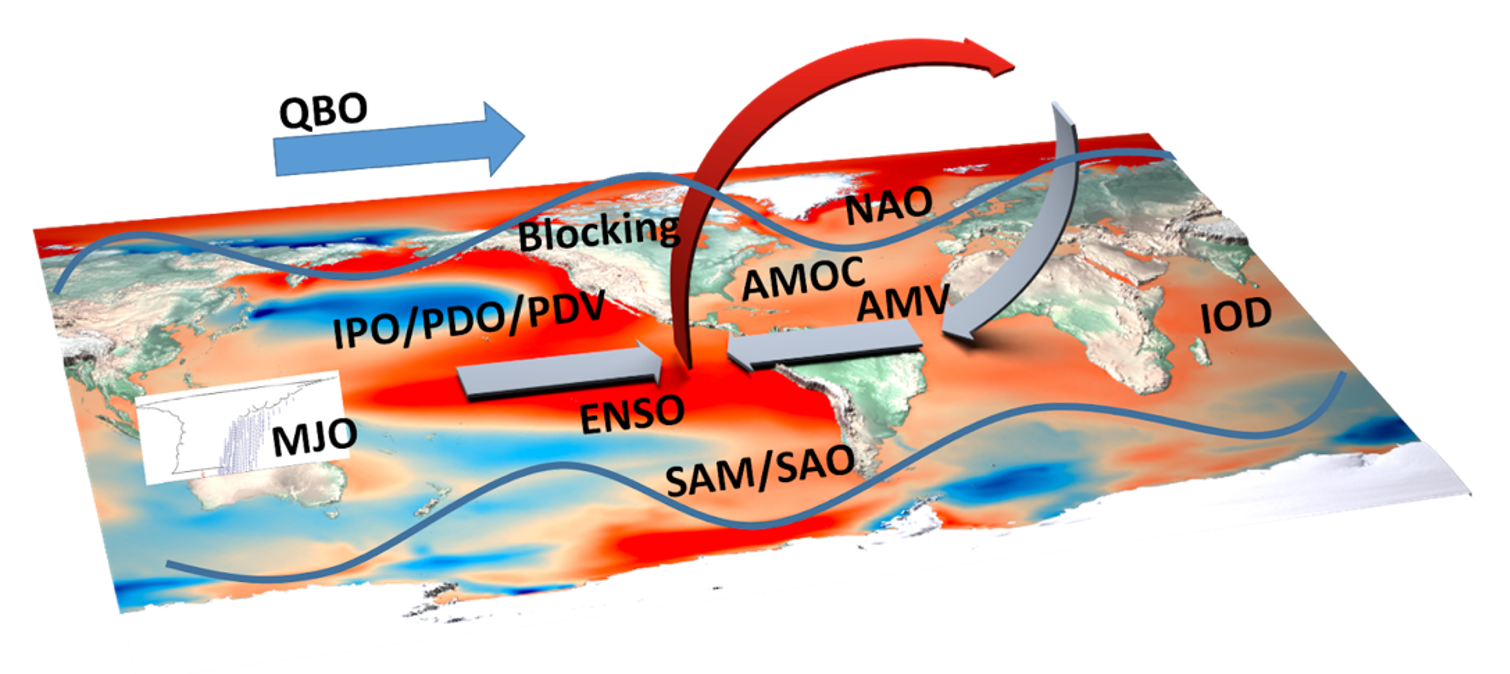Cooperative Agreement To Analyze variabiLity, change and predictabilitY in the earth SysTem (CATALYST)


The Cooperative Agreement To Analyze variabiLity, change and predictabilitY in the earth SysTem (CATALYST) represents a sustained commitment by the Department of Energy (DOE) and the University Corporation for Atmospheric Research (UCAR) to perform foundational research toward advancing a robust understanding of modes of variability and change using models, observations and process studies.
Project Leadership
PI: Gerald A. Meehl [ meehl@ucar.edu ]
Co-PI: Jadwiga (Yaga) Richter [ jrichter@ucar.edu ]
Project Manager: Nan Rosenbloom [ nanr@ucar.edu ]
Research Objective (RO) Leads:
- Aixue Hu, RO1 [ ahu@ucar.edu ]
- Brian Medeiros, RO2 [ brianpm@ucar.edu ]
- John Fasullo, RO3 [ fasullo@ucar.edu ]
- Christine Shields, RO4 [ shields@ucar.edu ]
Administrative Support: Stephanie Shearer [ shearer@ucar.edu ]
Project Description
CATALYST performs foundational coordinated research in a team oriented, collaborative environment. It aims to advance a robust understanding of the modes of Earth system variability and change by utilizing the DOE Exascale Earth System Model (E3SM), the NCAR Community Earth System Model (CESM), Coupled Model Intercomparison Project (CMIP) multi-model data sets, a hierarchy of simpler models, machine learning methods, and numerous observational data sets.
CATALYST research is centered around modes of variability (MOV) on subseasonal to decadal timescales summarized in the figure below:

Modes of variability addressed by research tasks in CATALYST: MJO = Madden-Julian Oscillation; NAO = North Atlantic Oscillation (and the related Arctic Oscillation (AO) that is characterized by zonal wind and temperature variations across the mid-and high northern latitudes); ENSO = El Niño/Southern Oscillation; IPO/PDO/PDV = Interdecadal Pacific Oscillation/Pacific Decadal Oscillation/Pacific Decadal Variability (used interchangeably in the literature); QBO = Quasi-Biennial Oscillation; IOD = Indian Ocean Dipole; SAM/SAO = Southern Annular Mode/Semi-Annual Oscillation; AMV= Atlantic Multidecadal Variability (also known as Atlantic Multi- decadal Oscillation, AMO); AMOC = Atlantic Meridional Overturning Circulation; blocking = long-lived areas of high atmospheric pressure. Sea-surface temperature (SST) anomaly pattern in schematic represents the positive phase of IPO/PDO/PDV with connections through the atmospheric Walker Circulation to the Atlantic.
2021 - 2024 Research
CATALYST research consists of four primary research objectives that are closely interrelated.
RO1: Predictability and Prediction
RO1 addresses the limits of predictability of modes of variability on subseasonal-to-decadal timescales using E3SM, CESM, and machine learning methods. Specific research tasks include:
- Use initialized reforecasts with CESM and E3SM to understand the sources of predictability of key modes of variability (MJO, ENSO, PDV, AMV)
- Use machine learning methods to increase the limits of predictability on subseasonal to decadal timescales
- Understand the relationship between AMOC and predictability of MOV (AMV, PDV)
RO2: Interactions & Sensitivity
RO2 uses a hierarchy of models to inform predictions, and it addresses relevant processes and feedbacks related to modes of variability and how they interact with each other. Specific key research tasks include:
- Quantify the interactions between the QBO and the MJO
- Identify interactions between MJO and ENSO
- Examine teleconnections among ENSO, SAO, SAM, and IPO
RO3: Benchmarking, External Forcing & Tipping Points
RO3 benchmarks model representations of modes of variability in Earth system models, examines the role of external forcing in changes of modes of variability and their interactions, and addresses the likelihood and predictability of tipping points and irreversible changes. Specific key research tasks include:
- Benchmark modes of variability and climate states in the E3SM, CESM, and other climate models.
- Quantify the role of external forcing in driving changes in modes of variability in E3SM and CESM using large- and single-forcing ensembles.
- Quantify the couplings between modes of variability in E3SM and CESM and tipping points in the climate system.
RO4: High-Impact Events
RO4 investigates the relationships between the modes of variability addressed in the other research objectives and high-impact events—such as flash droughts and precipitation extremes, atmospheric rivers, tropical cyclones—and how these might change in future climate through model analyses, process studies, and innovative application of machine learning methodologies. Specific key research tasks include:
- Using machine learning and artificial intelligence methods, identify what types of synoptic weather features produce extreme precipitation, and quantify how those synoptic features are affected by modes of variability and possible future changes.
- Examine connections between modes of variability and atmospheric rivers.
- Quantify linkages between modes of variability and tropical cyclones.
- Connect modes of variability with precipitation extremes.